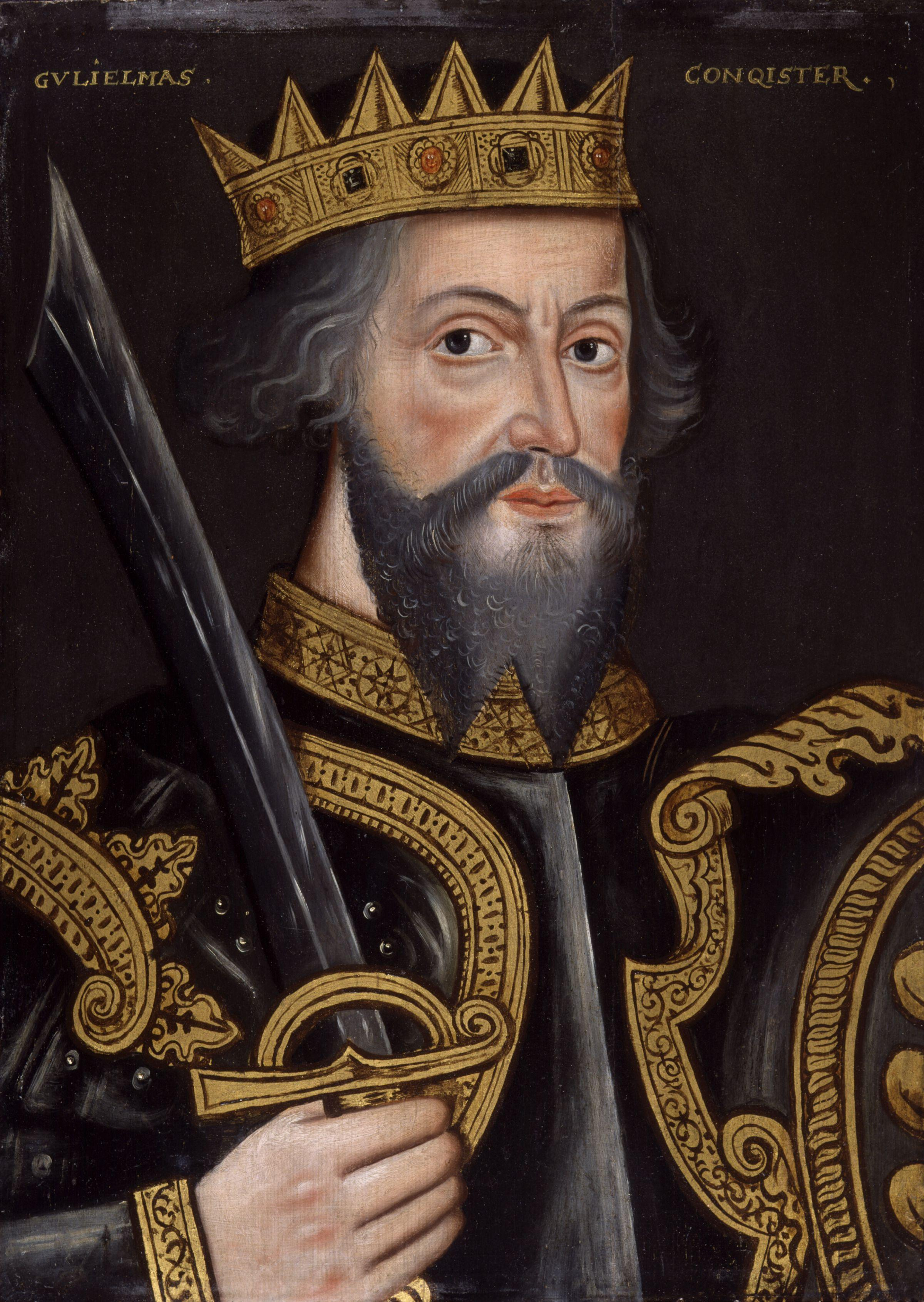If the Normans are disciplined under a just and firm rule, they are men of great valor, who... fight resolutely to overcome all enemies. But without such rule they tear each other to pieces and destroy themselves, for they hanker after rebellion, cherish sedition, and are ready for any treachery.
~ William the Conqueror (wiki) (deathbed speech, reported in Orderic Vitalis, Ecclesiastical History)
A French bastard landing with an armed banditti and establishing himself King of England against the consent of the natives, is, in plain terms, a very paltry rascally original.
~ Thomas Paine (1737-1809) (on the Norman Conquest, Common Sense)
William next invented a system according to which everybody had to belong to somebody else, and everybody else to the king. This was called the Feutile System, and in order to prove that it was true, he wrote a book called the Doomsday Book (wiki), which contained an inventory of all the Possessions of all his subjects; after reading the book through carefully William agreed with it and signed it, indicating to everybody that the Possessions mentioned in it were now his.
~ W. C. Sellar and R. J. Yeatman (1066 and All That, Ch. XI*)
Today is the anniversary of the Battle of Hastings (wiki) in 1066, in which William the Conqueror (wiki) initiated the Norman conquest of England by defeating the forces of the Anglo-Saxon King Harold, who was killed in the conflict (although there's been recent speculation that Harold survived). William, Duke of Normandy, had been promised the English throne by his cousin, Edward the Confessor (reigned 1042-1066), and Harold, earl of Wessex, had sworn agreement to that succession. However, with the death of Edward, Harold crowned himself king, leading William to mount a sea-borne invasion to assert his own right.
 |
| Larger version here. |
Landing his army on the south coast of England, he confronted Harold at Hastings, routed the Anglo-Saxon army, declared himself King William I, and ultimately established Norman hegemony over all of England.**
By establishing a network of castles and strong points, including the Tower of London, William brought order to the country and reigned until 1087, when he was succeeded by his son William II. The Norman invasion and the events leading up to it are exquisitely portrayed on the Bayeux Tapestry (actually an embroidery 75 yards long), which was made within a few years of the Conquest, likely in southern England.
By establishing a network of castles and strong points, including the Tower of London, William brought order to the country and reigned until 1087, when he was succeeded by his son William II. The Norman invasion and the events leading up to it are exquisitely portrayed on the Bayeux Tapestry (actually an embroidery 75 yards long), which was made within a few years of the Conquest, likely in southern England.
On the ceremonial gateway to the World War II British military cemetery for the dead of Normandy at Bayeux, one finds the apposite Latin inscription,
NOS A GULIELMO VICTI VICTORIS PATRIUM LIBERAVIMUS
* N.B. Subtitled, "A Memorable History of England, comprising all the parts you can remember, including 103 Good Things, 5 Bad Kings and 2 Genuine Dates." Still amusing after 80 years.
** It is not often remembered that just prior to Hastings, Harold and his hard-pressed army had been forced to repel a Norse invasion in the north of England, and it required a forced march to the south for them to meet the Normans.
For the Last 1,000 Years, the Same Families Have Owned Most of England:
Shortly after the Normans conquered England in 1066, their monarch, William, seized all of the lands, then divvied up control among those soldiers and nobles who helped him defeat the Anglo-Saxons (and keeping a fair bit for himself). However, as dramatic as that was, it is even more shocking that today, most of Britain remains in the hands of the descendants of those early Norman conquerors.
My favorite William bit, though, has to be his body exploding (well, bursting) at his funeral. Here's another account of the events.
Horrible Histories has a "breaking news" program from 1066, in which the news is arriving via (the Bayeaux) tapestry:
This brief BBC Documentary gives all the basics..
This video, also from the BBC, covers a re-enactment which took place on October 15, 2006:
And an animated version of the Bayeaux Tapestry:
This "Eyewitness to History" site has an account of the battle with the events depicted by the individual tapestry scenes.



War is a fascinating subject. Despite the dubious morality of using violence to achieve personal or political aims. It remains that conflict has been used to do just that throughout recorded history.
ReplyDeleteYour article is very well done, a good read.
Error in the (modern) Latin quotation: it should be PATRIAM, not PATRIUM (which doesn't make any sense).
ReplyDeleteWe are still feeling the direct effects of this battle today. The Norman Conquest completely transformed the English language, and is generally responsible for our odd spellings and often unpredictable pronunciations. Why is -b silent in comb, dumb, and bomb? Why do so many words have a silent e? Or the sounds in cough, bough, rough, though, through, and draught?
ReplyDeleteBlame the French.